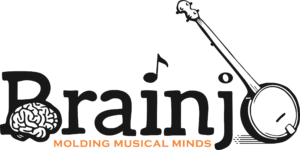Before we get started picking our first string, let’s first answer a few burning questions, like:
- What kind of banjo you need.
- How to hold the banjo.
- Do you need to be able to read music?
- Do you need to use fingerpicks?
LINKS MENTIONED
1) Click here to subscribe to the Fingerstyle Banjo Channel
2) D’Addario EJ69 banjo strings
5) Beats for Banjo practice tracks
6) The Course Book: Click the button below to get the course book when available.
FULL TRANSCRIPT
Okay, welcome again to 2-Finger Banjo In 7 Essential Steps, a crash course for the total beginner. In this video, real quick, I’m just going to cover a few things that are good to know before you get started picking your first string, sort of the things, the burning questions you might have in your mind.
First one, a common question is what kind of banjo do you need? The great news is any kind of banjo.
That’s true of every style of banjo, clawhammer, 3-finger, bluegrass, Scruggs, whatever. People tend to get dogmatic about certain things or they feel like a tradition means you should be using one particular style. I certainly think you should use whatever banjo you want.
The great thing about 2-finger thumb lead, there is no dogma. It’s one of those things where anything goes. You’ll see me probably playing both kinds of banjos in these videos. So right now I have an open-back banjo. Sometimes I play on that. Sometimes I’ll play on a resonator banjo, use whatever you have available.
What kind of strings should you use?
So I typically play with steel strings. I use the D’Addario light gauge banjo strings with phosphor bronze fourth when I can find it. I’ll place a link to those strings individually, a description, should you want to pick those up.
If you have a banjo with Nylgut strings though, that will work great and will sound fantastic, two-finger thumb lead style as well. Or, if you have natural gut, go for it as well. Doesn’t matter. We’ll be tuning to the same pitches regardless, so choose whatever a string you would like or whatever you have on hand.
Do you have to be able to read music?
That’s a question that sometimes I get. The answer is absolutely not. So the banjo is a by-ear tradition passed along by year. There is a type of notation called tab that is used to help convey arrangements and we’ll cover that later in the course, but we won’t be using that initially.
So we will be using a combination of visual diagrams and our ears. Like I said in the first video, one of the things you’re going to be learning in this course, is you’re going to be developing your ear and learning how to pick melodies out by ear so that ultimately you can pick out and play your own arrangements by ear, something anybody can do, it just takes a step-by-step process, which we’ll get started with in this particular course. Do you need to play with pics?
So another burning question people have. Another reason why playing this non-dogmatic style is so great, it doesn’t matter. You can do either one, whatever you like. Maybe if you think you might be playing in bluegrass settings or you really want to learn bluegrass banjo at some point, it may be a good idea to start practicing with pics. But you can play both ways.
I play both ways. A lot of times practicing on my own, I’ll play without pics and many times there are songs that I play that I prefer to play without pics, especially if I’m playing and singing on my own. You can do either.
So bare fingers, don’t really need a nail. You’re really just picking with the flush of your fingers when you are playing with your bare fingers. But you can also use picks. And when I do, I usually use Dunlop mediums for my thumb pick and I have Sammy Shelor picks for my finger picks. So metal for my index finger and a plastic thumb pick for my thumb.
And lastly, how do you hold the banjo? For this style and for most styles, I tend to rest the banjo in my lap, so the pot kind of sitting between my legs, my arm is over the top of the banjo, putting a little bit of downward pressure on it, and just like that, the banjo is stable, right?
And I’m going to play. We’ll cover the hand position in the next video, but that’s it. If you would like, and my banjo does have a strap, you can place a strap on, give you a little bit of extra stability. You need to adjust it so that you get the right angle.
I like this position, middle of the lap, kind of a 45-degree angle, but there are many times where I’ll be like this or move it all around. And so, ultimately, you’ll want to have some flexibility, but that’s the one to start with. That should feel the most comfortable to have it at that 45-degree angle, resting in between your lap.
Sometimes, especially with an open back banjo, less so with a resonator, I will put something under my left leg to raise that thigh up a little bit so that it helps to keep this angle up, and so that’s another thing.
So, if you have something to put your … I might have said leg, but rest your foot on to bring your foot up just a little bit, that tends to help as well. Okay, so those are the main things I think to know before getting started. Anything else we’ll be covering in the context of each of these videos and so we’ll see you in the next one.
